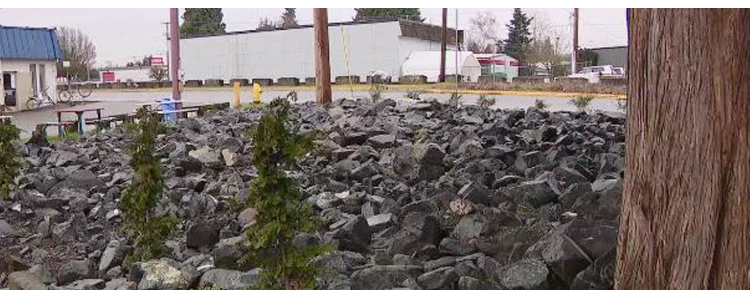In Puyallup, a decision by city officials to spend over $7,000 on boulders has sparked controversy and debate among locals and homeless advocates. The rocks, piled up along a small strip of grass on Spring Street, were initially claimed to protect damaged vegetation. However, Fox Thirteen’s Lauren Donovan uncovered the real motive behind this move.
The Controversial Use of Boulders in Puyallup
As Donovan investigated, it became apparent that the city’s decision to dump rocks in the area, particularly across the street from the New Hope Resource Center for the homeless, was not about vegetation. Locals and gardeners expressed skepticism about the claim, pointing out that placing rocks directly on grass would choke it and prevent any growth.
Michael Dolan, a resident of Pierce County who has been living on the streets, perceives these rocks as a clear message from the city – that homeless individuals like him are not welcome in the area. The rocks, densely packed and occupying the space where homeless individuals used to gather, have effectively displaced them to other areas such as nearby alleyways.
The city, initially citing property damage prevention, eventually admitted that the boulders were indeed intended to deter the homeless population from gathering in that location. This admission confirms suspicions and concerns among community members and advocates for the homeless.
Jessica Kingsbury, a local business owner operating a hair salon next to the resource center, criticized the city’s approach. While acknowledging that the rocks have dispersed the crowds from the lot, she points out that it has simply pushed the problem to other areas, like the alleyways. Moreover, she views the rocks as an eyesore and criticizes the decision as a poor and short-sighted solution to the issue of homelessness in Puyallup.
A Community Divided
The situation in Puyallup reflects a larger debate about how cities manage homelessness and the public spaces often occupied by unhoused individuals. The city’s approach, using physical barriers to displace homeless individuals, raises ethical and humanitarian concerns. It highlights the challenges cities face in balancing the needs and concerns of business owners with the rights and needs of the homeless population.
For the homeless community and advocates, the city’s actions are seen as exclusionary and insensitive, failing to address the root causes of homelessness. Instead of investing in long-term solutions, such as affordable housing or support services, the city opted for a cosmetic fix that does not solve the underlying problem.
Read More:
- Defending Science and Reputation: Michael Mann’s Defamation Trial Against Bloggers
- IRS Approves Stimulus Checks for Retirees: Understanding Eligibility and Payment Details
The debate in Puyallup is indicative of a broader societal challenge – how to compassionately and effectively address homelessness. It calls for a reevaluation of strategies and the need for more humane and sustainable solutions. As Puyallup grapples with these issues, it becomes a microcosm of a national conversation about homelessness, public spaces, and the role of local governments in addressing complex social problems.

